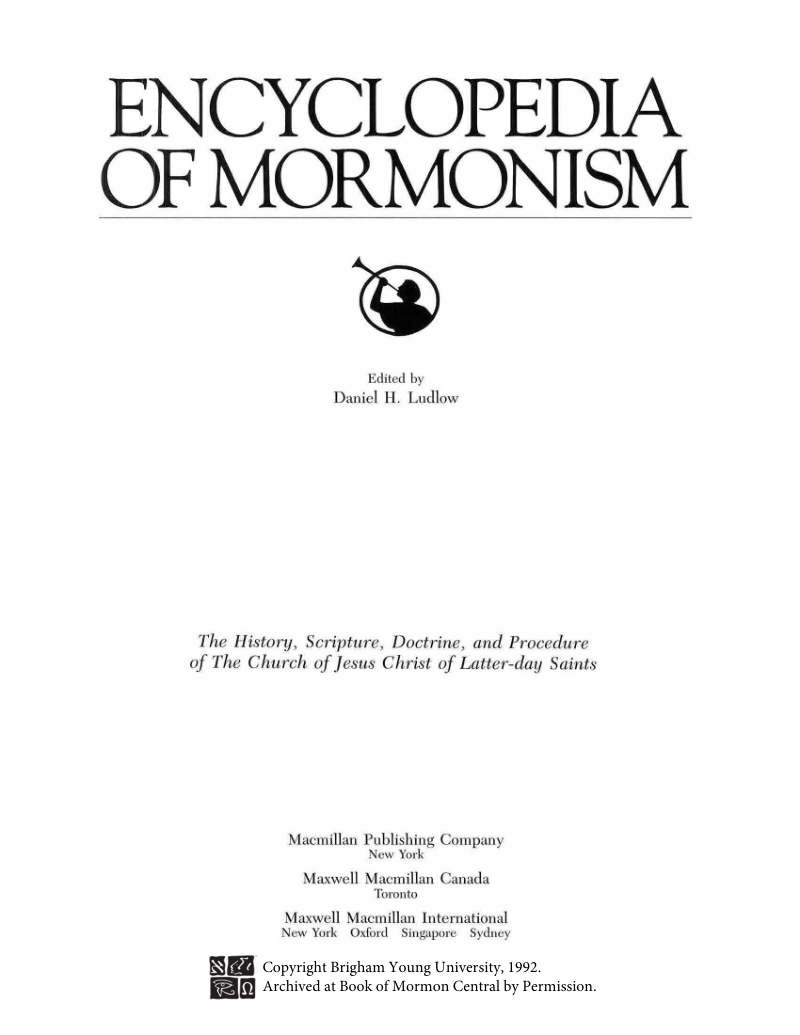John L. Sorenson reviews the various populations and peoples described in the Book of Mormon.
- Type
- Book
- Hearsay
- Direct
- Reference
John L. Sorenson, "Book of Mormon Peoples," in Encyclopedia of Mormonism, ed. Daniel H. Ludlow (New York: Macmillan, 1992), 1:191–195
- Scribe/Publisher
- MacMillan Publishing Company
- Audience
- Reading Public
- Transcription
At least fifteen distinct groups of people are mentioned in the Book of Mormon. Four (NEPHITES, LAMANITES, JAHEDITES, and the people of Zarahemla [Mulekites]) played a primary role; five were of secondary concern; and six more were tertiary elements.
NEPHITES. The core of this group were direct descendants of NEPHI 1, the son of founding father LEHI. Political leadership within the Nephite wing of the colony was "conferred upon none but those who were descendants of Nephi" (Mosiah 25:13). Not only the early kings and judges but even the last military commander of the Nephites, MORMON, qualified in this regard (he explicitly notes that he was "a pure descendant of Lehi" [3 Ne. 5:20] and "a descendant of Nephi" [Morm. 1:5]).
. . .
LAMANITES. This name, too, was applied in several ways. Direct descendants of Laman, Lehi's eldest son, constituted the backbone of the Lamanites, broadly speaking (Jacob 1:13- 14; 4 Ne. 1:38-39). The "Lemuelites" and "Ishmaelites," who allied themselves with the descendants of Laman in belief and behavior, were also called Lamanites (Jacob 1:13-14). So were "all the dissenters of [from] the Nephites" (Alma 47:35). This terminology was used in the Nephite record, although one cannot be sure that all dissenters applied the term to themselves. However, at least one such dissenter, Ammoron, a Zoramite, bragged, "I am a bold Lamanite" (Alma 54:24).
. . .
THE PEOPLE OF ZARAHEMLA (MULEKITES). In the third century B.C., when the Nephite leader Mosiah1 and his company moved from the land of Nephi down to the Sidon river, "they discovered a people, who were called the people of Zarahemla" (Omni 1:13-14) because their ruler bore that name. These people were descendants of a party that fled the Babylonian conquest of Jerusalem in 586 B.C., among whom was a son of the Jewish king Zedekiah, MULEK. Hence Latter-day Saints often refer to the descendants of this group of people as Mulekites, although the Book of Mormon never uses the term. When discovered by the Nephites around 200 B. c., this people was "exceedingly numerous," although culturally degenerate clue to illiteracy and warfare (Omni 1:16-17). The Nephite account says the combined population welcomed Mosiah as king.
. . .
JAREDITES. This earliest people referred to in the Book of Mormon originated in Mesopotamia at the "great tower" referred to in Genesis 11. From there a group of probably eight families journeyed to America under divine guidance.
- Citations in Mormonr Qnas
The B. H. Roberts Foundation is not owned by, operated by, or affiliated with the Church of Jesus Christ of Latter-day Saints.

